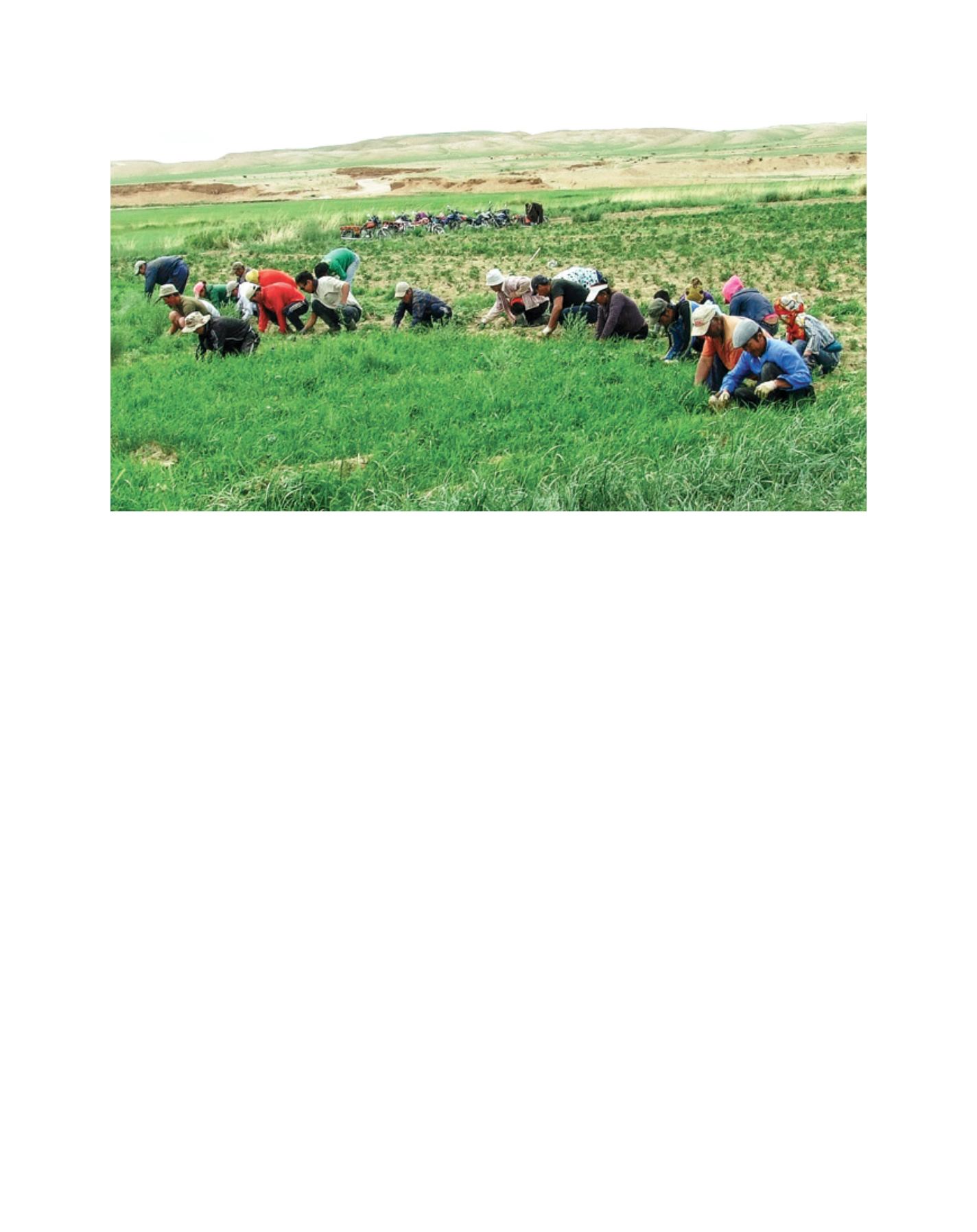

[
] 46
European-Asian grassland in north-east Asia with a lot of human
activity. Now most of the grassland in Mongolia has degraded
and is in the process of desertification because of overgrazing,
overcultivation, overdeforestation and open-pit exploitation.
In the past 40 years, 42.5 per cent of the country’s land has
been desertified, with desertified lands increasing by 13-18
per cent per year. Potential arable land has decreased quickly,
from 130x104 ha in the 1990s to 90x104 ha in 2004. Now,
44.5 per cent of grassland is influenced by desertification.
The East Gobi province has the most severe desertification in
Mongolia. Its area is about 11.5x104 km
2
, of which 17.6 per
cent is light desertified, 41.7 per cent moderate desertified and
40.5 per cent severe desertified land.
Mongolia is united with UNCCD, and the Mongolian
Government promulgated national action programmes, called
‘Green Belt’, in 1997 and 2005 to combat desertification. The
Government has implemented programmes to protect against
land degradation, combat desertification and soil erosion, and
improve ecological structure, costing an estimated Tog 200-300
million per year. However, it could not achieve satisfactory
results in combating desertification. There are eight nurseries in
arid areas and the 150-500 thousand seedlings they grew every
year before transition to a market economy satisfied demand. In
the market economy, however, most nurseries do not have active
work and only 3-10 thousand seedlings are grown in a year.
The Mongolian Government is implementing the Green
Belt programme and the National Programme to Combat
Desertification, and aims to build national capacity for preven-
tative measures in view of the global trends and the present
economic situation.
In the summer of 2013, herder communities involved in
the United Nations Development Programme’s (UNDP’s)
Sustainable Land Management for Combating Desertification
project harvested high yields of hay. This was the result of
several years of effort to improve the soil condition in their
localities, representing arid and semi-arid regions.
With funding from the Netherlands and Switzerland govern-
ments and UNDP, the Sustainable Land Management (SLM)
project started in 2008 and operates in 13 soums of four prov-
inces representing different ecological zones of Mongolia. It
aims to introduce and promote sustainable land management
practices, adjusted to local soil and climatic conditions and
livelihoods. Herder communities involved in the project
have fenced new hayfields to prevent livestock movement
and obtained abundant harvests by improving irrigation and
applying organic fertilizers.
Mongolia is located in an arid and semi-arid zone of conti-
nental Asia, characterised by hot and dry summers, low soil
fertility and scarce vegetation cover dominated by few species.
Nomadic herders rear sheep, goats, cattle, horses and camels
as their main source of income. They often face insufficiency
of hay and fodder in winter and spring seasons, which is a
major obstacle in sustainable livestock husbandry. In recent
years, herders have become less mobile, leading to overgraz-
ing and hindering plant seed maturation, which in turn leaves
pastureland barren and prone to wind and water erosion.
With the collapse of the socialist system and the disman-
tling of state-owned cooperatives in the 1990s, livestock was
privatised but not the land itself. Although the number of live-
stock has been steadily increasing, the practice of collaboration
between herders was lost and the rearing of excessive numbers
of livestock which exceeded the pasture’s carrying capacity has
largely degraded the land during the past two decades.
Before the start of the SLM project, 70 per cent of
Baruunbayan-Ulaan soum in Uvurkhangai province was
degraded with increased sand invasions, the main reason for
The high-yield results encourage herders from ‘Bayantuhumiin Uguuj Horshoo’ group to make their desert area green
Image: Min. Env. Mongolia
L
iving
L
and
















